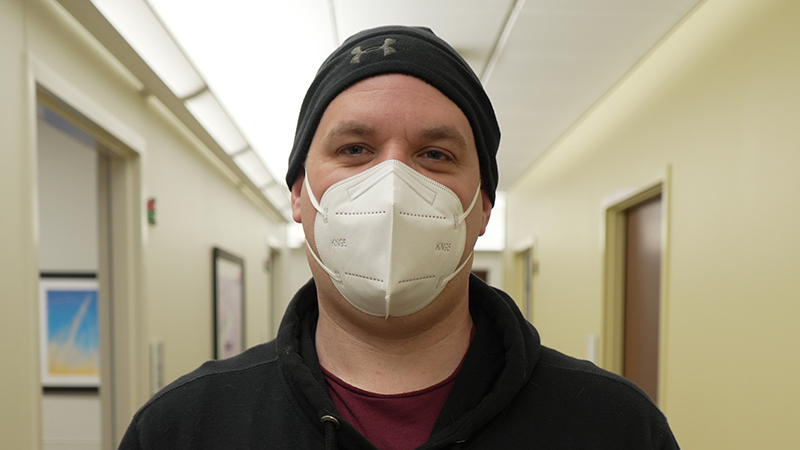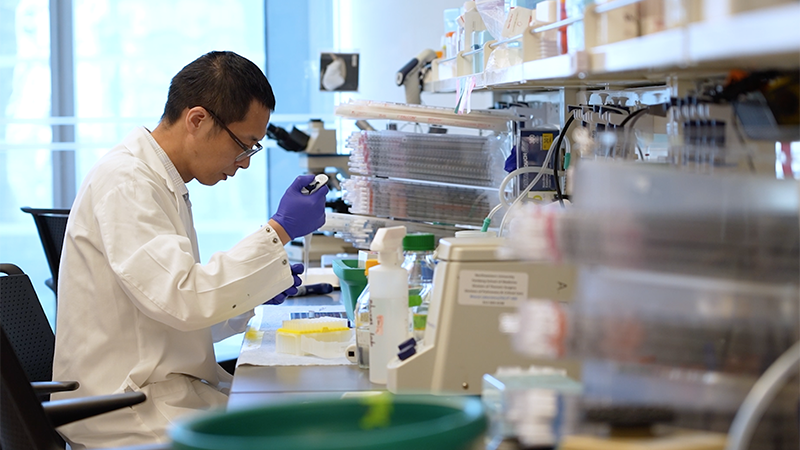What Is Trigeminal Neuralgia?
Published August 2020
An Often Misdiagnosed and Mistreated Condition
It's a condition that can make brushing your teeth or talking difficult. And because it’s rare, it is often misdiagnosed and mistreated.
Trigeminal neuralgia is a very specific condition that can cause excruciating intermittent and at times near-constant facial pain. The trigeminal nerve is the largest and most complex cranial nerve. It is located at the base of your brain and carries sensation from your face to your brain.
Joshua M. Rosenow, MD, director of Functional Neurosurgery at Northwestern Memorial Hospital, says, “Trigeminal neuralgia is one of the most significant and disabling challenges we face in the field. It can prevent people from eating, brushing their teeth and going about their daily lives.”
What’s worse: Triggers can vary person to person and be seemingly unsuspecting. For example, common triggers include:
- Pressure from shaving
- Applying makeup
- Brushing teeth
- Standing in the wind
- Eating, drinking or talking
Because of the location of the pain, individuals often misinterpret its source. “The pain may be felt in the face and mouth, and as a result, people may undergo unnecessary procedures, such as root canals, extractions or multiple dental evaluations, thinking it is related,” explains Dr. Rosenow.
“Because trigeminal neuralgia is so rare, it is often underdiagnosed. And because there isn’t a blood test, it’s the patient’s story first and foremost when we make the diagnosis,” says Babak S. Jahromi, MD, PhD, vice chair of regional neurosurgery at Northwestern Medicine. This, he notes, is where a sympathetic ear, clinical skill and listening are paramount.
Treatment Options
There are several treatment options available once trigeminal neuralgia is properly diagnosed. Some individuals are able to manage the condition successfully with a combination of medications and lifestyle changes. Others may undergo nerve blocks to help reduce the pain. If medication does not provide relief or has unacceptable side effects, there are surgical treatment options.
“It used to be called the suicide disease, but not today,” explains Dr. Jahromi. “There is a range of excellent medical and surgical options that provide a multimodal approach. This is where having a collective team with multiple areas of expertise is beneficial.”
Although there is no one treatment pathway, the characteristics and location of the pain are analyzed to determine where to start. Certain advanced MRI techniques help specialists determine the location of the pain and determine if a blood vessel is impacting the trigeminal nerve.
It used to be called the suicide disease, but not today.— Babak S. Jahromi, MD, PhD
One surgical treatment option is called a microvascular decompression, which does not injure the nerve. In this procedure, the surgeon will insert a small teflon pad between the nerve and the compressing blood vessel.
“This type of procedure often provides the longest duration of pain relief,” says Dr. Jahromi. This is especially beneficial for patients who have a blood vessel pushing on the nerve or the myelin sheath. In other words, according to Dr. Jahromi, “it gently moves the blood vessel away from pushing against the nerve.”
Other treatment options intentionally injures the trigeminal nerve in exchange for reducing the pain. This can be done through a number of techniques. One of them is balloon compression rhizotomy, which is conducted during an outpatient visit by placing a needle into the cheek through the face. The surgeon can also use radiofrequency energy to selectively burn part of the nerve — a procedure commonly performed by Dr. Rosenow.
Any of these treatments can be repeated as necessary.
The Research Continues
Dr. Jahromi and Dr. Rosenow continue to conduct research in order to provide better treatment options. Dr. Jahromi started conducting his procedures in the angio suite, which offers better quality imaging during the procedures. “This technology provides superb 3D imaging of the skull and nerve pathways, so we can get the most optimal view of the trigeminal ganglion when performing a balloon compression,” says Dr. Jahromi. This allows for the utmost precision when undergoing treatment options.
They are also looking at pain patterns to determine which treatments are most successful in specific patient populations. This will help better predict outcomes from surgical procedures to reduce trigeminal nerve pain from returning. They hope their research paves the way for more targeted treatment options for patients.
Additionally, they support others to raise awareness and funding for research. This includes the Laugh Your Face Off Event, held annually in Chicago, which supports the The Facial Pain Research Foundation.
The possibility of pain relief for their patients continues to fuel their efforts. “The satisfaction of getting someone to be pain free is tremendous. Giving them back their quality of life is a wonderful feeling,” says Dr. Rosenow.






